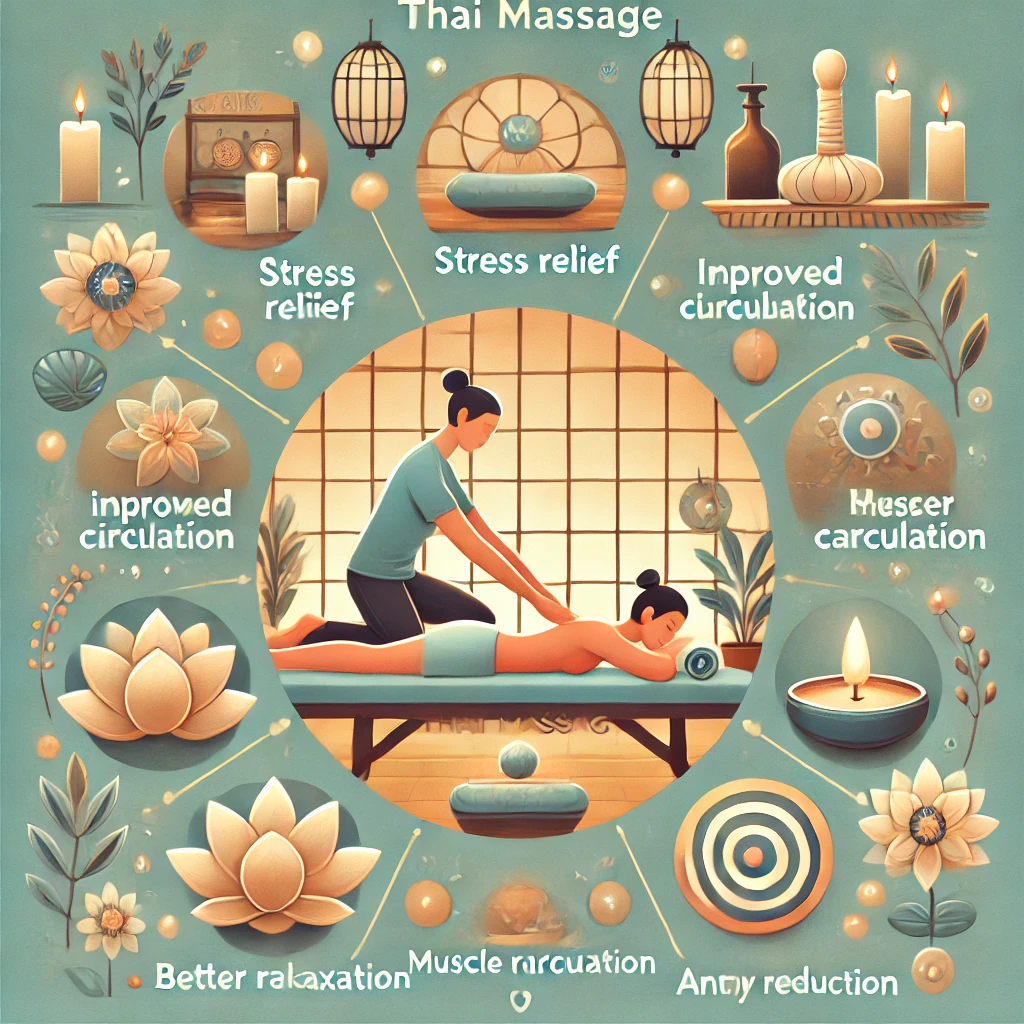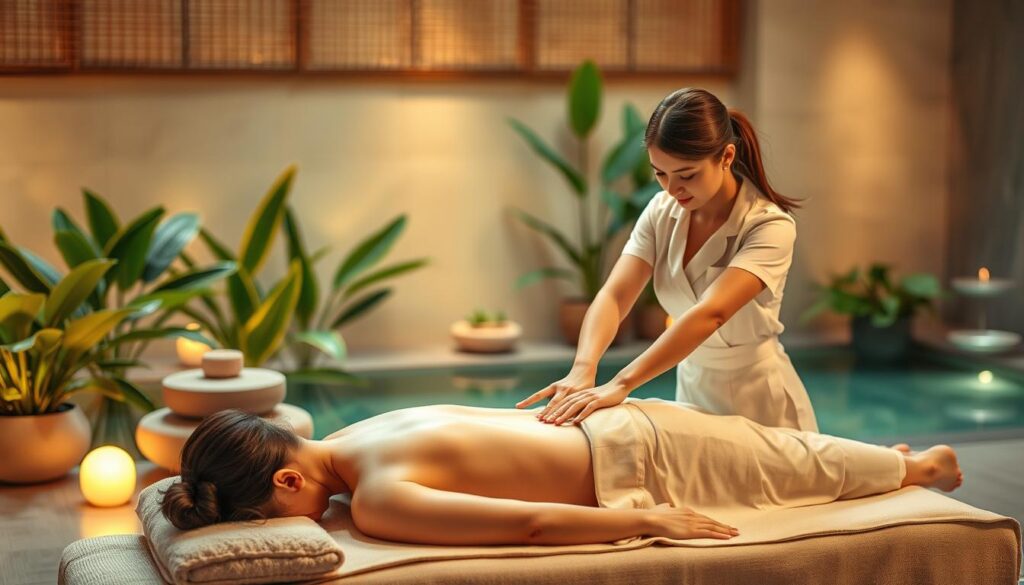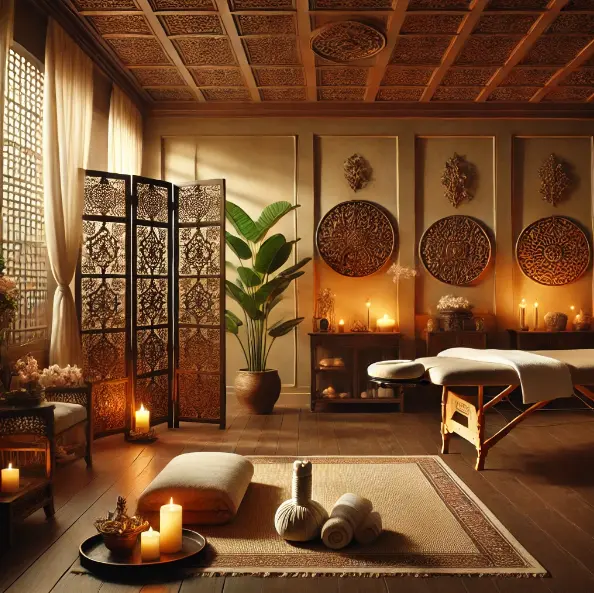
TEXT US

TEXT US
perththaimassage
November 13, 2024




Do not hesitate to contact us. Your enquiries is most welcome.

If you’ve never experienced the benefits of a Thai massage, you’re in for a treat. At Perth Thai Massage, we aim to introduce you to a therapy that has been revered for centuries for its health and wellness benefits. Thai massage is more than just relaxation; it is a unique blend of acupressure, assisted yoga stretches, and meditation.
Thai massage has been around for over 2,500 years, combining influences from traditional Chinese medicine and ancient Indian Ayurvedic practices. Statistics show that over 60% of people who try Thai massage for the first time report significant stress reduction and increased flexibility, according to a global wellness survey.
Unlike typical Western massages that focus on muscle manipulation, Thai massage is a holistic therapy. It works with energy lines (known as Sen lines) and integrates yoga-like stretches, creating an experience that is as much about healing as it is about relaxation.
Almost everyone can benefit from a Thai massage. Whether you’re an athlete seeking faster muscle recovery, a professional with work-related stress, or a retiree looking to stay active, Thai massage can help. In particular, if you suffer from issues like stiffness, muscle soreness, or high stress levels, the holistic approach of Thai massage may offer significant relief.
Note: Always consult with your healthcare provider if you have any underlying health conditions before trying new forms of therapy.
If you’re new to Thai massage, our team at Perth Thai Massage is here to make your first experience as relaxing and effective as possible. When you walk into our Perth studio, you’ll be greeted by a calming environment designed to help you unwind immediately.
See our prices at Perth Thai Massage, we’re passionate about helping our clients discover the incredible benefits of Thai massage. Whether you’re looking to relieve stress, improve flexibility, or simply try something new, our experienced therapists are ready to guide you.
👉 Siloed Content Note: Interested in learning more about the various techniques and benefits of Thai massage? Read Article 1: An Introduction to Thai Massage and Its Holistic Benefits for a deeper dive into how this ancient practice can transform your well-being.
Book your appointment today and experience the rejuvenating power of Thai massage. Call us or explore our website for more information. We look forward to welcoming you!
Thai massage, also known as Thai yoga massage, is deeply rooted in ancient Thai healing traditions and influenced by Ayurvedic medicine and yoga practices. Developed by Buddhist monks as a form of healing therapy. Thai massage aims to promote physical, mental, and spiritual well-being by balancing the body’s energy flow. Therfore, releasing blockages along energy pathways known as “sen.”
The hallmark of Thai massage lies in its unique combination. Of assisted stretching, rhythmic compression, and acupressure techniques. During a Thai massage session, the therapist uses their hands, elbows, knees, and feet. To apply pressure to specific points on the body. While also guiding the recipient through a series of gentle stretching movements reminiscent of yoga postures. This dynamic approach helps to improve flexibility, release tension. This is to restore harmony to the body, mind, and spirit.
The origins of Thai massage The origins of Thai massage can be traced back to ancient Thailand. Where it was developed by Buddhist monks as a therapeutic healing method. Drawing inspiration from Indian Ayurvedic medicine and traditional Chinese medicine. Thai massage incorporates elements of yoga, meditation, and energy work to promote overall wellness.
Thai massage offers numerous benefits, including alleviating muscular pain, improving flexibility, and enhancing circulation. It also promotes mental clarity, emotional balance, and spiritual awareness. Making it a holistic therapy for total wellness.

Regular massage employs a variety of techniques, including effleurage (long, gliding strokes), petrissage (kneading and squeezing motions), and friction (circular movements with pressure), among others. These techniques are designed to manipulate the soft tissues of the body. Including muscles, tendons, and ligaments, to promote relaxation, improve circulation, and alleviate pain.
Normal massage as above employs various techniques, including effleurage (long, gliding strokes), petrissage (kneading and squeezing motions), and friction (circular movements with pressure). These techniques manipulate the soft tissues of the body, including muscles, tendons, and ligaments, to promote relaxation, improve circulation, and alleviate pain.
The origins of normal massage can be traced back to Per Henrik Ling. A Swedish physician who developed a system of therapeutic massage known as Swedish massage. Drawing on techniques from Chinese, Egyptian, Greek, and Roman traditions. Ling created a comprehensive approach to massage therapy that focused on restoring balance and harmony to the body.
Normal massage provides a wide range of benefits. Including reducing muscle tension, promoting relaxation, improving circulation, and enhancing flexibility. It has also been shown to reduce stress, alleviate anxiety and depression, and relieve chronic pain conditions such as arthritis and fibromyalgia.
Both Thai massage and normal massage offer therapeutic benefits for individuals from all walks of life. For those in physically demanding professions, such as bricklayers. Both types of massage can provide relief from muscular tension, stiffness, and fatigue. The stretching techniques and acupressure points targeted in Thai massage. Can help alleviate muscle strain, improve flexibility, and enhance overall mobility. Similarly, the kneading and stroking techniques used in normal massage. Can soothe tired muscles, reduce inflammation, and alleviate discomfort from repetitive strain injuries.
Both Thai massage and normal massage offer unique approaches to healing and well-being. Each with its own set of techniques, origins, and benefits. Whether you’re drawn to the dynamic stretching movements of Thai massage or the soothing strokes of normal massage. There’s a massage therapy style to suit every preference and need. By exploring the diverse world of massage therapy, you can discover new pathways to relaxation, rejuvenation, and vitality for the body, mind, and spirit.
See our articles on the complete benefits of Thai massage & Thai massage prices
Thai massage involves a combination of assisted stretching, rhythmic compression, and acupressure techniques, while regular massage typically focuses on kneading, stroking, and rubbing of the muscles using various techniques such as effleurage and petrissage. Additionally, Thai massage is rooted in ancient Thai healing traditions and emphasizes balancing the body’s energy flow, whereas regular massage has its origins in Western medical practices and aims to promote relaxation and reduce muscle tension.
Both Thai massage and regular massage can be effective for relieving muscular tension and stiffness, but they approach this goal in different ways. Thai massage uses stretching and acupressure techniques to release tension and improve flexibility, while regular massage employs kneading and stroking motions to relax the muscles and improve circulation. The choice between the two depends on individual preferences and needs.
Thai massage is often favored by athletes and physically active individuals for its emphasis on flexibility and mobility. The assisted stretching techniques used in Thai massage can help to improve range of motion, reduce the risk of injury, and enhance athletic performance. However, regular massage can also be beneficial for athletes, as it helps to alleviate muscle soreness, promote recovery, and prevent overuse injuries.
Both Thai massage and regular massage can promote stress relief and relaxation, but they offer different approaches to achieving these goals. Thai massage combines physical manipulation with mindfulness practices to induce deep relaxation and reduce stress levels. Regular massage, on the other hand, focuses on soothing the muscles and calming the nervous system through gentle, rhythmic strokes. Ultimately, the choice between the two depends on individual preferences and the desired outcome.
While both Thai massage and regular massage are generally safe for most people, there are certain contraindications and health considerations to keep in mind. Thai massage involves stretching and pressure techniques that may not be suitable for individuals with certain medical conditions, such as osteoporosis, herniated discs, or recent injuries. Regular massage, on the other hand, may not be recommended for individuals with skin conditions, open wounds, or certain medical conditions that affect circulation. It’s important to consult with a qualified healthcare professional before undergoing any type of massage therapy, especially if you have underlying health concerns.